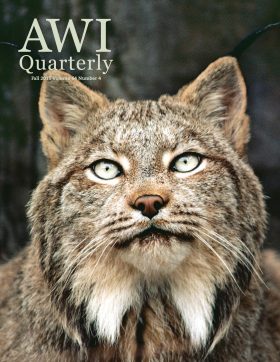
The Canada lynx (Lynx canadensis), a medium-sized wild cat, thrives in cold, forested environments with deep snow. Lynx populations naturally fluctuate in rhythm with the roughly decade-long crest and crash cycles of the animals' primary prey, snowshoe hares. Through bust and boom times, however, lynx were once abundant in the northeastern United States, before fragmentation of habitat drastically reduced their numbers and range in the United States outside of Alaska. Now, south of the Canada-contiguous US border, lynx are confined mostly to Maine and pockets of Minnesota and western states, and are listed as threatened under the Endangered Species Act. Trapping of lynx in Maine threatens to reduce their numbers even further. AWI, the Center for Biological Diversity, and the Wildlife Alliance of Maine have filed suit against the US Fish and Wildlife Service for allowing trappers in Maine to “incidentally take” lynx when targeting other furbearing wildlife.